It’s our great hope that each of you will completely enjoy reading, and hopefully learning from, this article about 7 Remarkably Riveting Asian Reptiles. We certainly enjoyed collecting and compiling the data for you. The region contains an incredible array of related species!
Clearly, this list doesn’t contain all the reptilian marvels found here, though. Any such list would be prohibitively lengthy. We do, however, feel that the creatures referenced herein serve as excellent examples of the variety of life located here, including the reptiles.
Philippine Crocodile
Philippine Crocodile Facts
- Leading off this article about 7 Remarkably Riveting Asian Reptiles we present the impressive work of evolution known as the Philippine Crocodile.
- This magnificent work of Nature and evolution most frequently goes by the descriptive name for excellent reasons. It also has other, less often used common names, though. While that’s not uncommon, it has more alternate names than some.
- Sometimes individulas refer to the fabulous reptile as either the bulkarot, the Mindoro crocodile, or the Philippine freshwater crocodile. Scientists, meanwhile typically refer to it by its hard to pronounce official scientific name of the Crocodylus mindorensis.
- The first formal recognition of this marvelous creature as a species, however, did not occur until the year 1935. The respected American herpetologist, Karl Patterson Schmidt, holds the honor of that particular scientifically noteworthy acknowledgment.
- Interestingly, though, experts previously considered the animal to merely be a subspecies of yet another crocodile. In 1989, however, experts determined that it was, in fact, not a subspecies of the New Guinea crocodile, despite beliefs to the contrary.
- Sadly, though, the population of the marvelous Philippine Crocodile plunged drastically in modern times. This occurred mainly due to fishing practices, and exploitation. The IUCN, therefore, listed it as Critically Endangered, on its Red List, in 2008.
- In fact, it’s further considered to be the most highly threatened of all known crocodile species. Thankfully, however, the reptile now enjoys a measure of protection under the law. It nevertheless faces other threats, such as habitat loss and climate change.
Philippine Crocodile Physical Description
Though the incredible Philippine Crocodile easily impresses those who encounter it, the animal does not do so purely to sheer size alone. That’s because, compared to related species, it’s relatively small. Further, it’s actually among the smallest of all crocodilians.
Like many reptiles, though, it displays a slight degree of the physiological characteristic of sexual dimorphism. In its specific case, this trait manifests itself in terms of physical size, alone. In some species, this trait appears in both size and overall appearance.
More specifically, though, the females of this amazing species attain a smaller size than males. That further applies to length and weight. The overall difference, however, remains comparatively minor. This sometimes makes identification difficult for experts.
Between the genders, a mature specimen of the Philippine Crocodile reaches a length measuring approximately 10 ft (3.1 m). The gender-based differnce is more pronounced in weight, however. Males weigh up to 420 lb (190 kg), yet females rarely exceed 200 lb (90 kg).
Like its many relatives, this crocodilian develops thick, bony plates, like armor, covering its body. These further develop especially thick on its back. It also manifests a relatively broad snout. In coloring, it’s a golden-brown shade when young, but darkens as it matures.
- Kingdom: Animalia
- Phylum: Chordata
- Class: Reptilia
- Order: Crocodilia
- Family: Crocodylidae
- Genus: Crocodylus
- Species: C. mindorensis
Philippine Crocodile Distribution, Habitat, and Ecology
The very name of the remarkable Philippine Crocodile provides a good indication its native range. That’s due to the fact that the reptile is native to region of the Philippines. For an entire species, however, that’s an extremely limited section of the globe for it to inhabit.
Sadly, though, even within this range it’s lost much of its former territory. That’s because the reptile once appeared throughout the region. Unfortunately, though, it’s now been eradicated in much of the area. Due to this, the animal now appears in only a few areas.
Those highly isolated sections of the overall region further consist solely of the islands of Dalupiri, Luzon and Mindanao. Much of those regions, though, now form National Parks. Like most of its relatives, it displays strong preferences for its choice of habitat.
In each area, though, the majestic reptile lives in the same three types of ecosystem. These zones of habitation consist of either marshes, ponds, or freshwater rivers. It also inhabited the same types of ecosystems in the portions of the region from it has been extirpated.
Like others of its kind, this magnificent crocodilian evolved an entirely carnivorous diet. Also like its many kindred around the world, it feeds opportunistically. Due to the nature of its very limited range, though, certain prey understandably forms the bulk of its diet.
This mainly consists of small mammals, aquatic invertebrates, other reptiles, a few birds, and quantities of fish. Here, the Philippine Crocodile displays an unexpected tendency. That’s due to the fact that it intentionally seeks out ailing fish in a higher ratio to others.
Rough-nosed Horned-Lizard
Rough-nosed Horned-Lizard Facts
- Next up among these 7 Remarkably Riveting Asian Reptiles appears the distinctive species known as the Rough-nosed Horned-Lizard.
- Understandably, this intriguing reptile, with its distinctive appearance, most frequently goes by the distinctive, if lengthy, common name. However, like many species throughout the world, the remarkable animal also holds another general name.
- In this case, that’s the more informative term of the Sri Lanka horned agama. Scientific professionals, such as researchers, though, tend to use the formal scientific name when referring to it. But that’s the relatively simple name of the Ceratophora aspera.
- It received this designation due to the work of a respected researcher. The German-born British zoologist, Albert Charles Lewis Gotthilf Günther holds that distinction. That’s because he accomplished the first recognition of it as a distinct species in 1864.
- Regardless of which term one chooses to employ, however, it’s a fascinating product of evolution. Its unique physical attributes also set it apart from all other known members of its genus. This only serves to enhance its particular appeal to researchers, though.
- Unfortunately, the Rough-nosed Horned-Lizard also seems to be dwindling rapidly in population. This regrettable trend further appears to hold true throughout the entirety of its range. The IUCN, therefore, currently lists the astounding lizard as Endangered.
- Several factors now threaten it. Habitat loss due to human activities ranks high among those, to be certain. Its greatest threat, however, now comes from climate change. Its own limited habitat range further serves to greatly augment the effects of each of these.
Rough-nosed Horned-Lizard Physical Description
Perhaps most incredibly, the Rough-nosed Horned-Lizard manages to pack all its intriguing characteristics into a very small body. That’s not completely surprising, though. That’s because Nature holds no distinction regarding such factors as size and impressiveness.
The creature does, however, stand out from the other members of its genus in one way. That’s where sheer physical size is concerned. That holds true due to the amazing fact that the animal displays a moderate degree of the physiological trait of sexual dimorphism.
More specifically, it manifests this aspect of its nature in the fact that females attain a slightly greater overall length than their male counterparts. This gender, though, only reaches lengths of about 1.6 in (4 cm). Yet the males remain moderately smaller in size.
This diminutive reptile also displays a striking pattern of coloring. This principally consists of a background of either dark yellow or light brown. A total of 17 darker bands, however, extend from head to tail. The space between these shows a much lighter shade.
Its body further develops with a slightly compressed shape. Each individual also possesses a unique, x-shape dorsal ridge, located directly behind the head. The creature further develops a very small crest, typically appearing along the region of the neck of the species.
The most noticeable trait of the Rough-nosed Horned-Lizard, though, remains the appendage to the nose. This marvel of nature distinguishes itself from related species yet again in this. That’s due to the fact the rostrum comprises up to 24% of the total length!
- Kingdom: Animalia
- Phylum: Chordata
- Class: Reptilia
- Order: Squamata
- Family: Agamidae
- Genus: Ceratophora
- Species: C. aspera
Rough-nosed Horned-Lizard Distribuiton, Habitat, and Ecology
The astonishing Rough-nosed Horned-Lizard has one natural attribute that unfortunately works against it. That’s the fact that it evolved as endemic to an extremely limited habitat range. Evidence further indicates that it never existed outside that specific region.
This holds true because it only appears in a tiny part of the region consisting of southern Asia. In point of fact, the unique lizard lives only on one specific island. That’s the island comprising the nation of Sri Lanka, a site holding many other natural wonders.
Yet even there, its habitat preferences further limit its zone of habitation. Due to those preferences, the reptile only dwells in areas of high moisture, with copious vegetation. This most frequently consists of forested regions, the greater the density the better.
It also demonstrates even more levels of choice. The regions in which it chooses to make its home also tend to be predominantly comprised of local hardwood tree species. The majority of individuals further prefer to live at altitudes of no more than 2,953 ft (900 m).
Although the Rough-nosed Horned-Lizard dwells amid so many trees, it’s not an arboreal species. Rather, the animal makes its home amid the copious quantities of leaf litter on the ground. It also tends to live in mated pairs, at least once it reaches adulthood.
This marvel of Nature also feeds indiscriminately, consuming a wide range of local prey. This includes various insects and other small invertebrates. Following mating, the female lays her eggs in a well-concealed nest. Typically, a clutch consists of two eggs for this species.
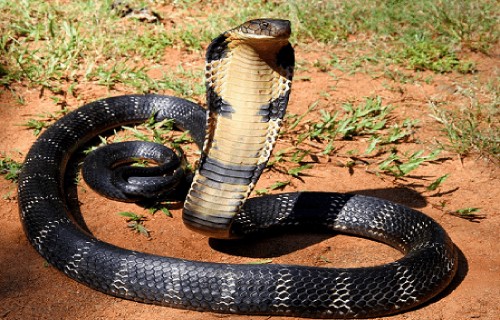
King Cobra Facts
- The third entry into this compilation of 7 Remarkably Riveting Asian Reptiles is none other than the majestic, if deadly, King Cobra.
- The truly impressive reptile remains best known for one outstanding fact. That’s the amaizng statistic that it ranks as the longest known species of venomous snake known to man. Despite its great length, however, it remains rather surprisingly light.
- The common name of this reptile creates a great deal of confusion, however, being quite deceptive. That’s because, regardless of its other impressive attributes, it does not qualify as a true cobra. True cobras have decidedly different attributes.
- It nevertheless remains worthy of respect. In point of fact, this remarkable animal actually forms the sole member of its own genus. No other known species even come close to its physical qualities. This fact alone also makes the snake of particular interest.
- This fascinating snake also remains worthy of being considered extremely dangerous to humans if provoked. This status holds true due to a combination of two factors. Those are the toxicity of its venom, and the sheer quantity of venom produced.
- For the moment, the IUCN lists the amazing King Cobra as Vulnerable. That status is reflected on the organizations’s Red List. Habitat loss forms a grave peril, given its region, of course. It also faces the threat of climate change, like other species.
King Cobra Physical Description
Quite remarkably, the beautiful but deadly King Cobra averages about 13 ft (4 m) in length. Exceptional individuals, however, sometimes attain a length of a much as 18.5 ft (5.6 m). Both measurements far outdistance any other known venomous snakes, though.
Despite its great length, however, the extremely dangerous snake remains a relative lightweight reptile. Surprisingly, this reptile typically averages no more than 13 lb (6 kg) in weight. In point of fact, the heaviest King Cobra on record only weighed 26 lb (12 kg.).
In color, the fabulous reptile also typically presents either one of several distinct color patterns. This trait further separates it from most related creatures. These patterns include either an olive-green, tan or black, with yellow bands crossing the body along its length.
- Kingdom: Animalia
- Phylum: Chordata
- Class: Reptilia
- Order: Squamata
- Family: Elapidae
- Genus: Ophiophagus
- Species: O. hannah
King Cobra Distribution, Habitat, and Ecology
The mighty King Cobra evolved as endemic to the forest regions of Southeast Asia. This quite impressive range includes India, Indonesia, and the Philippines. Within that range, individual specimens typically prefer to inhabit rather dense highland forests.
The fabulous creature also primarily preys on other snakes. However, most individuals will also consume small invertebrates. The King Cobra remains classified as diurnal, and primarily hunts during the day. During the night, it remains concealed, unless disturbed.
Despite its exaggerated reputation, this reptile isn’t typically aggressive unless provoked. When this happens, though, it will raise as much as one-third of its body length into the air. Subsequent to that, it will also flatten its head in preparation to strike.
This species also remains capable of delivering multiple envenomings in a single encounter. This further makes the incredible King Cobra stand out, since many, although certainly not all, other poisonous snakes lack this ability to repeatedly poison its victims.
In addition to its other unique attributes, it represents the only known snake that builds nests for its eggs. These it builds using dry leaves and twigs. One mating produces anywhere from 7-43 eggs. Those that survive to adulthood live an average of about 20 years.
Saltwater Crocodile
Saltwater Crocodile Facts
- Appearing next in this compendium of 7 Remarkably Riveting Asian Reptiles comes the powerful predator known as the Saltwater Crocodile.
- This magnificent work of Nature and evolution most frequently goes by its informative common name across its native range. That term, however, accurate, isn’t the only name applied to it, however. In point of fact, several others are sometimes used.
- The alternate names themselves also often provide clues to its nature. These include such terms as the Indo-Pacific crocodile, esturarine crocodile, sea crocodile, and marine crocodile. The animal’s also sometimes informally referred to as the saltie.
- Professional researchers, meanwhile, typically refer to the creature by its scientific name. That’s the technical name of Crocodylus porosus. Regardless of which name one chooses to use when referring to it, though, it’s an especially impressive crocodilian.
- The renowned German naturalist Johann Gottlob Theanenus Schneider made the first formal recognition of the reptile. The well known researcher acknowledged this incredible example of evolution as a separate and distinct species in the year 1801.
- The animal appears, for the moment, at least, to be maintiaing a population base that’s both stable and sufficient. That further seems to hold true throughout the entirety of its range. The IUCN therefore, presently lists the reptile as Least Concern on its Red List.
- The amazing Saltwater Crocodile nevertheless faces dangers that could potentially threaten it in the future. Habitat loss poses a potential threat, due to human expansion. The ongoing process of climate change, however, likely condstitutes its greatest threat.
Saltwater Crocodile Physical Description
Sheer size alone isn’t the only trait of the Saltwater Crocodile that impresses those who view the creature. That characteristic nonetheless certainly does bear mentioning. That’s because this species presently constitutes the largest of all currently known crocodilians.
The species also, like many of its relatives, displays a degree of the physiological characteristic of sexual dimorphism. In its specific case, though, this ranks as particularly severe. That’s due to the fact that the males attain a length roughly twice that of females.
The significantly longer males reach an average legnth measuring about 20 ft (6 m). Exceptional specimens, however, sometimes attain lengths of as much as 23 ft (7 m). The males further reach a weight that averages approximately 1,000 lbs (453.6 kg).
Females of the species, meanwhile, only attain an average length measuring approximately 10 ft (3 m). Even the exceptional individuals rarely exceed this by much. Sheer mass, however, remains starkly contrasted, with females rarely exceeding 330 lb (150 kg)!
While rare indivuals exceed these weights in both genders, the two sexes remain otherwise virtually indistinguishable in simple appearance. Its snout also develops wider than most related species. A pair of ridges also extends the length of the snout, from the eyes.
The body of the Saltwater Crocodile further differs from most others in its girth. Its body develops as much stouter in form. In coloring, most adults manifest a dark, greenish-drab shade. A few light gray or tan areas sometimes appear, however, in various spots.
- Kingdom: Animalia
- Phylum: Chordata
- Class: Reptilia
- Order: Crocodilia
- Family: Crocodylidae
- Genus: Crocodylus
- Species: C. porosus
Saltwater Crocodile Distribution, Habitat, and Ecology
Fortunately, the remarkable Saltwater Crocodile evolved as native to a comparatively broad swathe of the globe. Interestingly, furthermore, that range roughly straddles the equator. It further does so, by random chance, almost equally across both hemispheres.
This animal appears as far north as the eastern coast of the country of India. From there, its range extends through Sri Lanka, Bangladesh, Myanmar, Thailand, Malaysia, Cambodia, and Vietnam, to name a few. That range extends as far south as northern Australia.
Wherever it makes an appearance, though, it displays highly specific preferences in terms of habitat. That’s because the remarkable crocodilian makes its home solely along the coastline. Individuals do, however, occasionally swim far out to sea, outside their range.
Most specimens spend the vast majority of their time inhabiting very specific habitat types. These principally consist of river deltas and mangrove swamps. In some regions, the incredible animal also migrate to warmer parts of its range during the local winter season.
The Saltwater Crocodile also differs from most of its kin in yet another manner. Although most crocodilains live as social creatures, this species mainly lives a solitary life. Most individuals, especially the males, further exhibit extremely strong territorial drives.
It also spends much of its time in a lethargic state. This allows it to survive for months at a time without feeding. When it does feed, however, it does so strictly as a carnivore, like other crocodiles. It also represents an apex predator throughout most areas of its range.
Cantor’s Giant Softshell Turtle
Cantor’s Giant Softshell Turtle Facts
- Placing in the fifth position in this listing of 7 Remarkably Riveting Asian Reptiles, the Cantor’s Giant Softshell Turtle does so only due to random selection.
- This physically impressive, not to mention visually distinctive, creature most frequently goes by this informative common name. It also goes by several other alternate names, though, much like many species or reptile around the world.
- Its two other generally accepted common names, however, remain just as descriptive and informative as the primary one. These less frequently used, but still applicable, terms consist of the Asian giant softshell turtle and frog-faced softshell turtle.
- Scientific professionals, such as researchers, meanwhile, generally refer to the animal by its formal scientific name. That, though, is the somewhat tongue-twisting name of the Pelochelys cantorii. By any of these terms, it represents an amazing species.
- The first recorded formal recognition of the creature as a separate and distinct species, furthermore, took place in the year 1864. The respected British zoologist, John Edward Gray made that noteworthy contribution to the annals of science.
- Regrettably, the population of the Cantor’s Giant Softshell Turtle appears to be in decline. For that reason, the IUCN lists the species as Endangered, on its Red List. The primary threats to its existence seem to consist of habitat loss and hunting.
Cantor’s Giant Softshell Turtle Physical Description
The amazing Cantor’s Giant Softhsell Turtle easily impresses those fortunate enough to encounter it. It does so, however, due to more factors that simply its size. That characteristic nonetheless remains its most noteworthy attribute, in the minds of most people.
The animal also displays a degree of the physiological characteristic of sexual dimorphism. The degree to which this trait develops, however, remains extremely minor. It’s reflected in the nature of the tail. That of the male develops as thicker than the females’.
In terms of simple overall size, though, both genders attain virtually the same average measurements. The carapace typically averages between 28 – 39 in (71 – 99 cm). Individuals also reach an average weight of approximately 220 lb (100 kg), though exceptions occur.
The carapace itself also has a relatively smooth texture, with this typically presenting an olive green color. Yet immature individuals often display dark mottling and yellow coloring. This characteristic appears primarily present around the edges of the carapace.
The amazing Cantor’s Giant Softshell Turtle also has a broad skull, with relatively small eyes. These appear located close to the tip of the snout. When it reproduces, the female typically lays between 20-28 eggs at a time, between the months of February and March.
- Kingdom: Animalia
- Phylum: Chordata
- Class: Reptilia
- Order: Testudines
- Family: Trionychidae
- Genus: Pelochelys
- Species: P. cantorii
Cantor’s Giant Softshell Turtle Distribution, Habitat, and Ecology
Unfortunately, the fabulous cantor’s Giant Softshell Turtle evolved as native to a restricted region of the world. Even more regrettably, that zone’s now been reduced even more. Currently, it appears in only a few select sections of the contiinent and region of Asia.
The amazingly evolved reptile now primarily occurs only in the countries of India, Burma, and Thailand. Individuals do also occasionally appear in Cambodia, Vietnam, China, and Java. On occasion, individuals even appear in neighboring areas as well.
It remains undetermined if these are indigenous to these areas, however, leading to even more confusion. The remarkable reptile lives almost exclusively in freshwater streams and rivers. These bodies of water must also be relatively slow moving.
Although populations of this species most often live inland, there presently remains some evidence that its range also includes coastal regions as well. Ongoing investigations, however, continue to attempt clarify this situation, to better understand the creature.
The primarily carnivorous Cantor’s Giant Softshell Turtle also seems to be a highly effective ambush predator. It feeds primarily on mollusks, fish, and small crustaceans. Specimens occasionally will also consume small quantities of various aquatic plants.
Reticulated Python
Reticulated Python Facts
- The sixth animal making this article about 7 Remarkably Riveting Asian Reptiles is the astonishing snake known as the Reticulated Python.
- The amazing animal evolved as a particularly large variety of python. In fact, although not the most heavily built, this marvel of evolution currently ranks as the longest snake on earth. That impressive fact alone makes the creature worthy of note.
- Just as with other types of pythons, though, this truly amazing animal feeds as a constrictor, since the enormous snake has no venom. In addition, fully grown adult individuals become more than powerful enough to kill a human being.
- Such attacks on human beings by this particular species remain virtually unknown, however, despite what many people tend to believe. Though this rarely occurs, when it does, it usually happens in specific circumstances.
- These include if the snake has been removed from its natural habitat, or that habitat, frequently located near water, is disturbed. Related to this is the fact that the awesome Reticulated Python also ranks as a rather excellent swimmer.
- This truly remarkable trait ranks as one that the incredible reptile further shares with many of its related species. Among this particular example of constrictor, however, adult specimens even occasionally venture far out at sea.
Reticulated Python Physical Description
Most notably, the Reticulated Python fully earns its designation as the longest snake known to man. To the amazement of some, exceptional adult specimens sometimes approach 23 ft (7 m) in length. These truly gigantic individuals do not occur often, though.
Typical adults actually measure around 20 ft (6.1 m) in total length, and the usual mature individual further weighs about 165 lb (75 kg). The species presents no discernible sexual dimorphism, however, with both genders possessing the same appearance and size.
Its markings remain highly distinctive, and typically consist of intricate geometric patterns. These patterns also combine a quite wide variety of color shades. The exact colors vary according to the geographical range, sometimes making the snake difficult to identify.
This great variation in coloring among the Reticulated Python also represents an evolutionary adaptation to the local environment. Its remarkable natural camouflage also serves to make this highly dangerous animal almost invisible in its respective habitats.
- Kingdom: Animalia
- Phylum: Chordata
- Class: Reptilia
- Order: Squamata
- Family: Pythonidae
- Genus: Python
- Species: P. reticulatus
Reticulated Python Distribution, Habitat, and Ecology
The Reticulated Python appears to be endemic to quite a wide range. This area extends across much of Southeast Asia. In fact, this range extends from India, Bangladesh, and Laos, through Indonesia. It also includes numerous island countries, such as the Philippines.
In addition to its other impressive characteristics, it remains highly adaptable to its surroundings. As a result of this ability, it thrives in a rather wide variety of habitats. However, these regions of habitation typically include woodlands, grasslands, and forests.
But even within that native range, this fascinating reptile remains quite versatile in its habitat requirements. Amazingly, the enormous animal frequently inhabits rivers, lakes, and even large streams within these areas, being an excellent swimmer.
It feeds almost exclusively as an ambush predator, like other known types of constrictors. The diet, however, understandably varies, depending upon its location. This commonly includes such prey as larger mammals, but smaller specimens will feed on birds and rodents.
This species, like other snakes, evolved as oviparous. A female Reticulated Python will lay anywhere from 15-80 eggs per clutch, after mating. These then require an average of about 88 days to hatch. Newly hatched specimens average about 2 ft ( 61 cm) in length.
Gharial
Gharial Facts
- Closing out this collection of 7 Remarkably Riveting Asian Reptiles we present the lesser-known crocodilian known as the Gharial.
- The relatively simple term given it serves as the most often used common name for an impressive variety of crocodilian. This amazing reptile also goes by other alternate names, though, including such terms as the gavial and the fish-eating crocodile.
- The scientific name for it, meanwhile, remains the somewhat tongue-twisting term of Gavialis gangeticus. Regardless of which name one uses to refer to it, however, the remarkable animal represents a highly fascinating species of powerful reptile.
- This creature received its first scientific name as a result of the work of the renowned German naturalist, Johann Friedrich Gmelin, in 1789. That name was later changed, though, at the proposal of another German naturalist, Nicolaus Michael Oppel.
- Though once quite plentiful throughout the entirety of its natural range, its population began declining sharply in the 1930’s. That number has now shrunk to such an extent that the IUCN currently lists it as Critically Endangered on its Red List.
- Its estimated population recently numbered only 235 individuals, putting the magnificent Gharial in a precarious situation. Although efforts to bolster that continue, it faces numerous threats, such as the ongoing effects of climate change.
Gharial Physical Description
Despite being less well-known than some of its relatives, the fascinating Gharial nonetheless remains a physically impressive species. In fact, this particular reptile represents one of the largest of all known crocodilians, at least in terms of body length.
Like many reptiles, though, this marvel of Nature also displays a moderate degree of the physiological trait of sexual dimorphism. In the instance of this specific animal, that distinctive evolutionary trait manifests itself in terms of sheer physical size.
As a result, the male of the species attains a greater average length than the female. His overall length averages around 20 ft (6 m), while hers averages roughly 14.75 ft (4.5 m). Males also typically weigh slightly more, at about 400 lb (181 kg), against her 350 lb (159 kg).
Typically, the adult Gharial possesses a dark olive color tone, while young ones present a pale olive with dark brown spots or cross-bands. Its stomach, meanwhile, displays a yellowish-white. The back also darkens with age, turning nearly black after around 20 years.
Its most easily and frequently noted divergence from its relatives, however, remains the shape of its snout. This develops as quite elongated, and very thin in relation to the rest of the body. It further has a bulbous structure on the end of the snout, that it uses to hiss with.
- Kingdom: Animalia
- Phylum: Chordata
- Class: Reptilia
- Order: Crocodilia
- Family: Gavialidae
- Genus: Gavialis
- Species: G. gangeticus
Gharial Distribution, Habitat, and Ecology
Although the awesome Gharial once inhabited a significant portion of its part of the world, it now only appears in an estimated 2% of that previous range. This magnificent product of evolution evolved as endemic to the majority of the subcontinent of India, in Asia.
The powerful, but relatively timid reptile also once thrived in all the major river systems of the Indian Subcontinent. Its territory once spanned the rivers of its part from the Indus River in Pakistan across the Gangetic floodplain to the Irrawaddy River in Myanmar.
The gorgeous reptile evolved as perhaps the most highly aquatic of all its relatives. Due to that, its choice of habitat remains dictated by its needs, placing it always either in or near bodies of water. This consists almost exclusively of various rivers in its area.
Individuals spend almost all their time in the water, usually only leaving it to bask themselves in the sun. This activity most commonly takes place in small groups, with a dominant adult male, several females, and multiple young of both genders per group.
Like all its relatives, the Gharial feeds entirely as an active predatory carnivore. The young generally feed on small fish, tadpoles, frogs, and even insects. Adults, however, generally consume fish, which it swallows whole, but occasionally feed on crustaceans.
7 Remarkably Riveting Asian Reptiles
We sincerely hope that you have thoroughly enjoyed reading this article about 7 Remarkably Riveting Asian Reptiles. We certainly enjoyed putting it together for you. It’s also our fervent hope that reading it has left you with a new or renwed appreciation for such marvels.
Sadly, however, many of the marvelous reptiles around the globe now find themselves facing grim futures. Many of those dangers stem from the actions of man. We must do all that we can to preserve and protect all such creatures from extinction, for the sake of us all.
Check out our other articles on 5 Mesmerizing Marvels of Italy, Wonderful Wild Cats of the World, 7 Bizarre and Unusual Birds, Earth’s Extremely Threatened Flowers
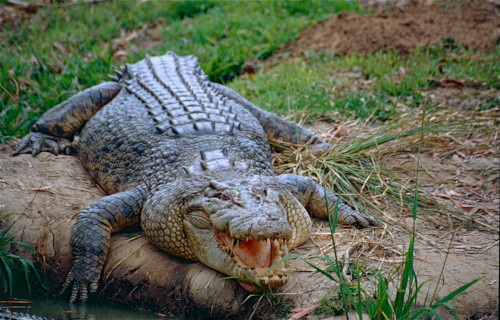
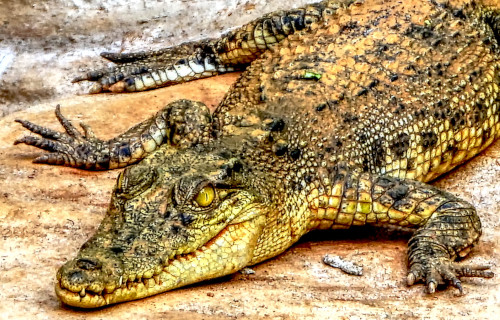
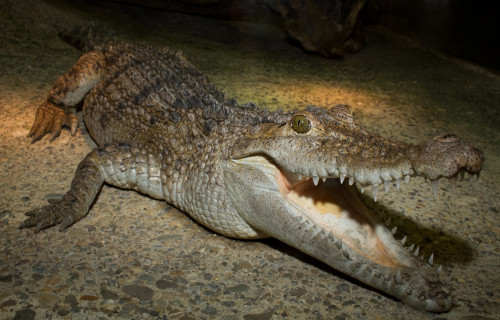
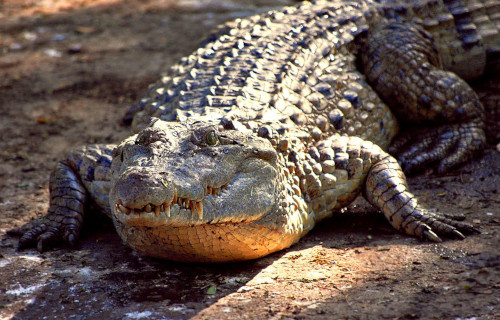
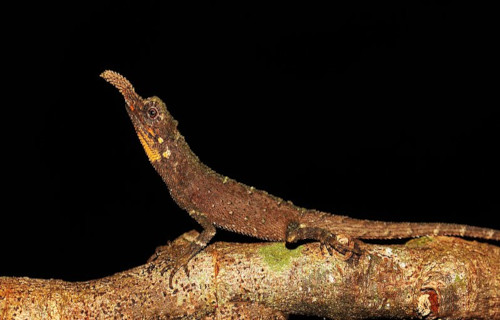
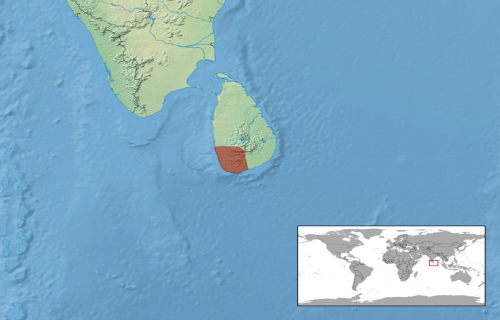

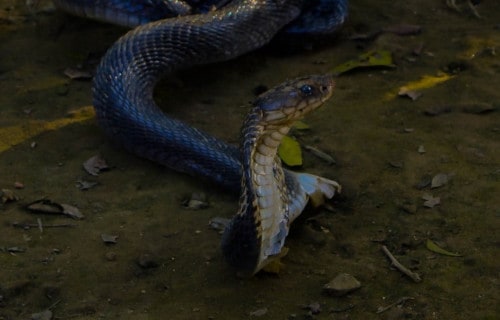
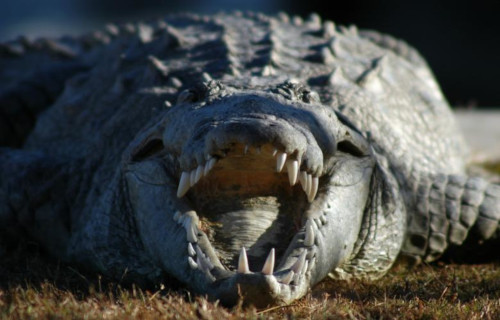
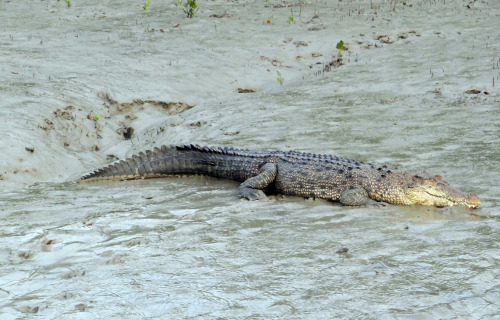
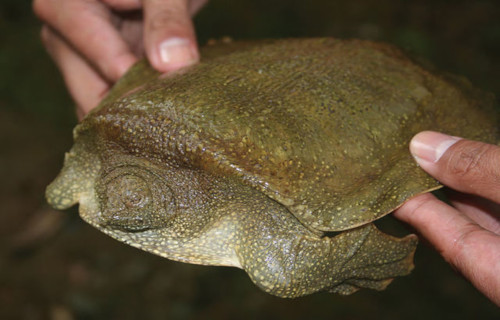
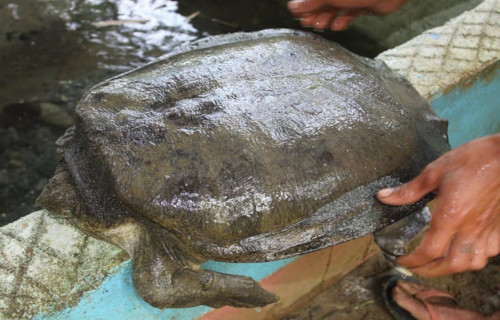
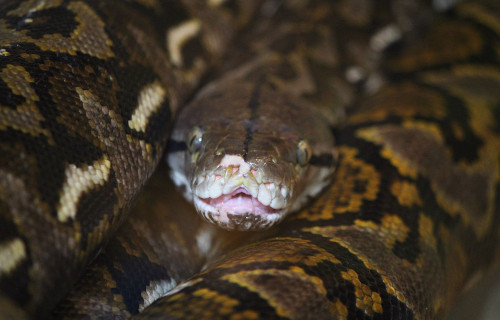
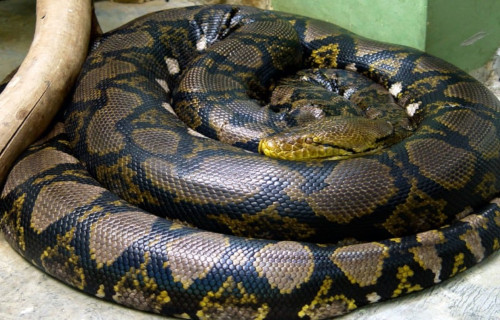
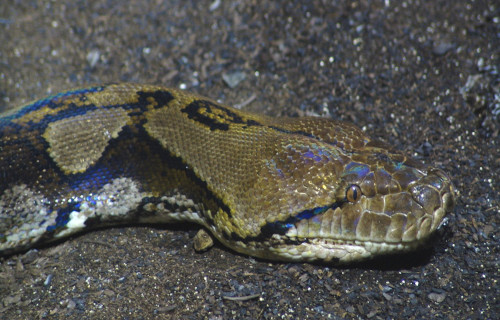
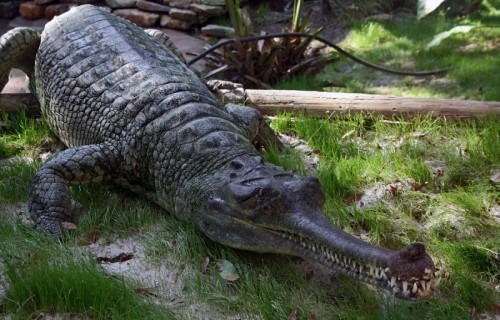
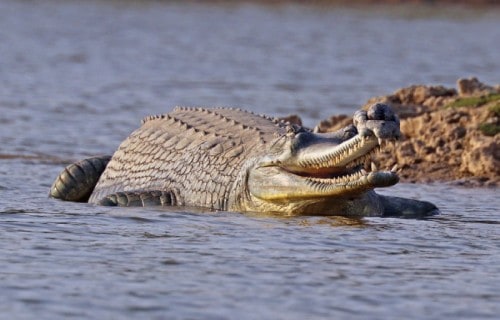
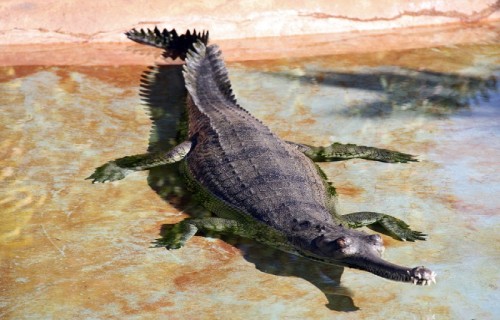









Leave a Reply